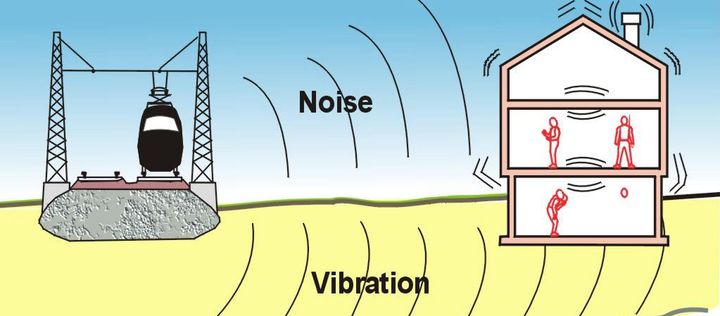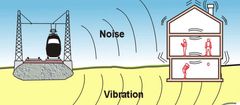COVID-19 pandemic caused seismic noise quiet period

Visualisations
- Figure 1 - available to download here - showing the global seismic stations analysed in the dataset.
- Figure 2 - available to download here - showing the global noise reduction affect
Movie - available to download here - seismic lockdown animation movie.
- Seismology-Gravimetry, Royal Observatory of Belgium, Avenue Circulaire 3, 1180 Brussels, Belgium
- Department of Earth Science and Engineering, Imperial College London, London, United Kingdom
- Department of Physics, University of Auckland, New-Zealand
- Department of Earth Sciences, Royal Holloway University of London, Egham, United Kingdom
- Centro de Geociencias, Universidad Nacional Autónoma de México, Campus Juriquilla, Querétaro, Mexico
Royal Observatory of Belgium, Belgium.
Imperial College London, UK.
University of Auckland, New-Zealand.
Royal Holloway University of London, UK.
Universidad Nacional Autónoma, Mexico.
Swiss Seismological Service, Switzerland.
University of Helsinki, Finland.
U.S. Geological Survey, US.
Zentralanstalt für Meteorologie und Geodynamik, Austria.
Universidad de Costa Rica, Costa Rica.
Royal Netherlands Meteorological Institute, Netherlands.
Boğaziçi University, Turkey.
GFZ Research Centre for Geosciences, Germany.
Università Degli Studi di Catania, Italy.
Istituto Nazionale di Geofisica e Vulcanologia, Italy.
University of Cologne, Germany.
Univ. Savoie Mont Blanc, France.
Volcanological & Seismological Observatory of Costa Rica.
University of Aberdeen, UK.
Dublin Institute for Advanced Studies, Ireland.
Delft University of Technology, Netherlands.
CSIC, Spain.
BGR, Germany.
National Observatory of Athens, Greece.
Brussels Environment, Belgium.
Observatorio San Calixto, Bolivia.
Seismotech S.A., Greece.
Hellenic Mediterranean University, Greece.
Norwegian Geotechnical Institute (NGI), Norway.
University of Alaska Fairbanks, US.
National Institute for Earth Physics, Romania.
Université de Strasbourg, France.
University of Oxford, UK
University of Lausanne, Switzerland.
University of Bristol, UK.
Instituto Geofisico del Peru.
Princeton University, US.
University of Tehran, Iran.
Boston College, US.
California Institute of Technology, US.
Stanford University, US.
SETI Institute, US.
University of British Columbia, Canada.
Ludwig-Maximilians-Universität München, Germany.
Australian National University, Australia.
McGill University, Canada.
GEOTOP Research Centre, Canada.
Raspberry Shake, Panama.
University of Maine, US.
University of California Riverside, US.
Universidad de Chile.
European Center for Geodynamics & Seismology, Luxembourg.
Raytheon BBN Technologies, US.
Université de Paris, France.
Observatoire Volcanologique du Piton de la Fournaise, France.
Victoria University of Wellington, New Zealand.
University of Patras, Greece.
University of Bergen, Norway.
University of California Berkeley, US.
Institut d'Estudis Catalans (LEGEF-IEC), Spain.
University of Michigan, US.
Truro School, UK.
IPG Strasbourg, France.
University of California, US
Keywords
Contacts
Steven GibbonsSenior Advisor
Tel:+47 986 13 288steven.gibbons@ngi.noImages

About NGI
På sikker grunn
NGI – Norges Geotekniske Institutt – er et uavhengig, internasjonalt senter for forskning og rådgivning innen ingeniørrelaterte geofag, der vi integrerer kunnskap mellom geoteknikk, geologi og geofysikk. Vår forskning gir kunnskap som styrker norsk næringsliv til å løse noen av de viktigste utfordringene vi står overfor innenfor klima, miljø, energi og naturfarer.
Gjennom årene har vi tiltrukket oss dedikerte fagfolk og internasjonale eksperter på bruk av geomaterialer som byggegrunn og byggemateriale, skredproblematikk og forurensning av grunnen. Utvikling og anvendelse av ny teknologi står helt sentralt i vår virksomhet for å finne bærekraftige løsninger og sikre at vi bygger et samfunn på sikker grunn. Vår ekspertise og løsninger er kjent og etterspurt i store deler av verden.
NGI har hovedkontor og laboratorier i Oslo, avdelingskontor i Trondheim, forskningsstasjon for snøskred på Strynefjellet, og utenlandskontorer med geoteknisk laboratorium i Houston, Texas, USA, og i Perth, Western Australia, i tillegg til samarbeidsavtaler med veletablerte selskap og institusjoner i store deler av verden.
NGI ble formelt opprettet 1. januar 1953, underlagt Norges Teknisk-Naturvitenskapelige Forskningsråd (NTNF). I 1985 ble NGI omgjort til en selvstendig stiftelse. Driftsvirksomheten (forskning og rådgivning) ble 1. januar 2024 overført til Norges Geotekniske Institutt AS, et aksjeselskap som eies 100 % av stiftelsen NGI.
Som en av hovedpartnerne støtter NGI Ingeniører Uten Grenser (IUG) økonomisk og gjennom å bidra med ingeniørkompetanse til IUGs oppdrag for norske bistandsorganisasjoner.
Subscribe to releases from NGI
Subscribe to all the latest releases from NGI by registering your e-mail address below. You can unsubscribe at any time.
Latest releases from NGI
Optimaliserte løsninger under bygging av ny cut-and-cover kulvert på Vestfoldbanen ga storgevinst for økonomi og klima1.7.2025 14:06:03 CEST | Pressemelding
Til tross for kvikkleire i grunnen og behov for kalksementstabilisering har Veidekke og geoteknisk rådgiver NGI – Norges Geotekniske Institutt redusert betydelig kostnader og klimagassutslipp for ny tunnel på Vestfoldbanen. Veidekke tar med seg erfaringene til andre prosjekter.
NGI tar i bruk ny helelektrisk borerigg19.3.2025 09:08:00 CET | Pressemelding
GMe100 er navnet og den er designet for å utføre alle geotekniske boremetoder, inkludert kjerneprøver av berggrunn.
NGI forlenger samarbeidet med Ingeniører uten grenser (IUG) med to år21.2.2025 10:01:36 CET | Pressemelding
– I en tid hvor det kuttes sterkt i bistandsmidler, vil næringslivets bidrag og støtte være ekstra viktig, sier Karina Wang, Direktør Mennesker, kommunikasjon og organisasjon, NGI.
NGI forlenger samarbeidet med Ingeniører uten grenser (IUG) med to år20.2.2025 12:03:07 CET | Pressemelding
– I en tid hvor det kuttes sterkt i bistandsmidler, vil næringslivets bidrag og støtte være ekstra viktig, sier NGI-direktør Karina Wang.
– Jeg håper alle som skal ut på tur denne vinteren følger disse rådene14.2.2025 13:01:56 CET | Pressemelding
Hittil denne vinteren har foreløpig ingen omkommet i snøskredulykker her til lands, men det er ikke mange uker siden fire norske liv gikk tapt i franske Val-Cenis.
In our pressroom you can read all our latest releases, find our press contacts, images, documents and other relevant information about us.
Visit our pressroom
